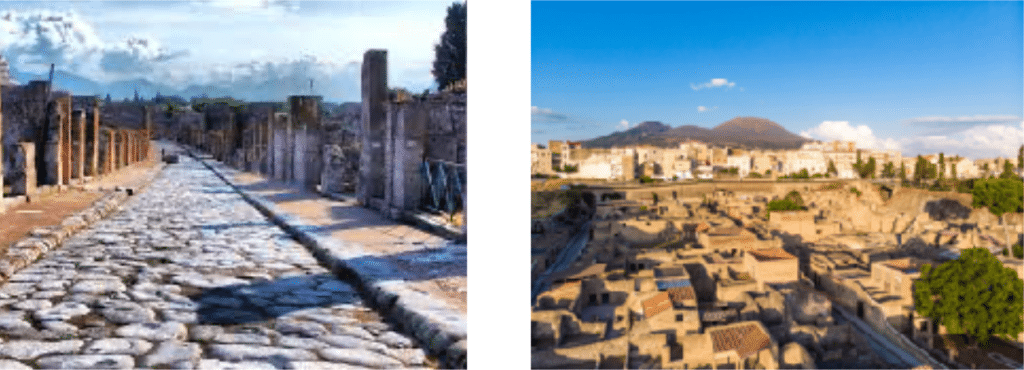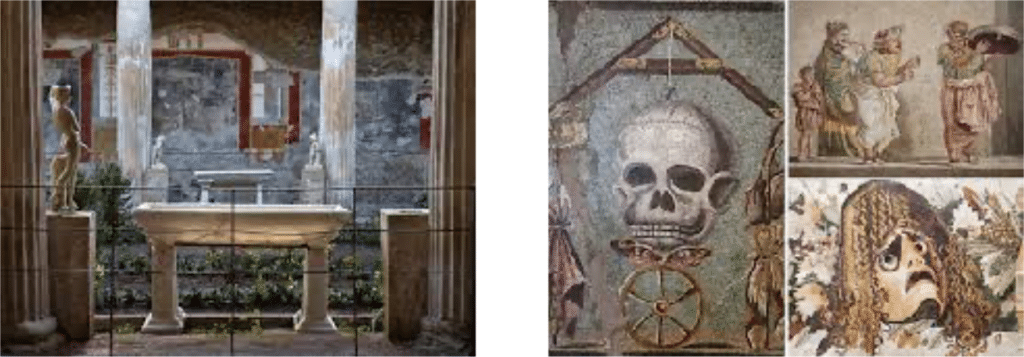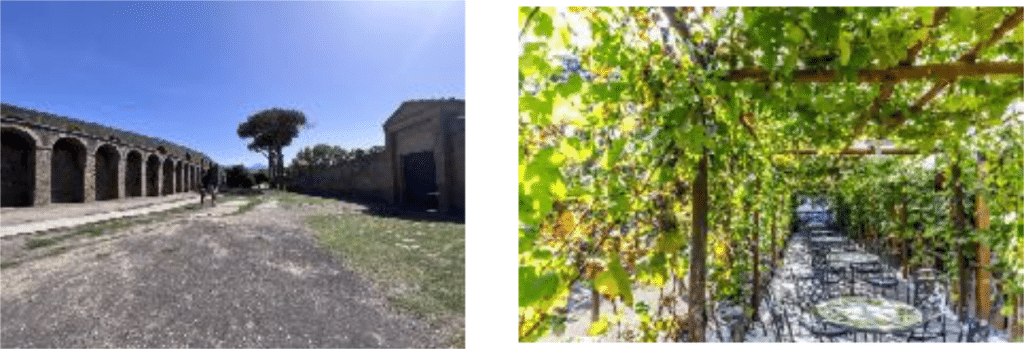By Italian Exclusive Villas
My name is Maria Anna Martignetti, I was born as an architect, one of the many passions that allows me to daydream, but it wasn’t enough, I wanted more. In life nothing happens by chance, so I decided to get back to study for the tourist guide competition. Qualified! A whole world was opened to me. In the twinkling of an eye, my life began to turn frantically. I always enjoyed speaking in English, deepening the history and the curiosity about places and people, looking at the city with the eyes of a child. My approach is that of extreme curiosity, as if I could be able discovering who knows what treasures (it would be a dream!), but at the same time with the historical, technical and critical knowledge that derives from architectural practice. I usually take notes of what I study and my impressions on post-it. It’s a real pleasure to re-read them, when I can find them! So, mindful of the thought of Amelia Earhart, “the most effective way to do something is to do it” I also becamean Art historian as well.I leave it to you to imagine what my next step will be…

Inspirations for tours.
Pompeii, the town frozen in time

An archaeological site that needs no introduction, it is enough just to hear the name that images of a distant world, but at the same time so close, appear before our eyes . Pompeii, the city frozen in time, holder of the roman world of the 1st century. a.d, a city that never dies. New discoveries that make us dream happen continuously and are added to those already made. The human casts, the technologies used for the spa facilities, wonderful frescoes and mosaics made with a technique so refined to amaze even today for so much beauty. Pompeii is also this, but what is most surprising is to still perceive life in the shops, along the streets, in every corner, because Pompeii is a living city. What are you waiting to discover it, to know its mysteries, secrets and ordinary everyday life?
Herculaneum, the pearl of the gulf

Life flowed in a pleasant way in the charming town washed by the sea, on the slopes of Vesuvius. A jewel, this is how Herculaneus appeared, built according to the model of a cultured Greek city, Naples and the refined lifestyle, with modern and tastefully furnished houses. But nothing is forever and the quiet was interrupted by that eruption of 79 d.c. when a sea of volcanic mud sealed everything. Everything seemed lost and forgotten forever, until for a fortuitous event, the excavation of a well, a little at a time, a part of the city began to return to being kissed by the light of the sun.
The Poppaea Villa: a charm never set
A unique villa of its kind, which looks

like it was originally. A grandiose residential complex, it is just one of the many buildings that the families of the Roman aristocracy built along the Campania coast. According to some scholars considered the home of Poppea Sabina, wife of Emperor Nero, but what fascinates most are the evocative perspectives, rich decorations, vivid colors and the whole complex of environments that in its entirety gives back an interesting insight into life interior of the villa, frozen in time to his last moment of life in that tragic 79 A.D.
Vesuvius Superstar

A giant not entirely benevolent, if we retrace the eruttive history of this volcano, one of the most famous in Europe, on whose summit, the Great Cone, seems to be halfway between sky and sea. In the beautiful days you can see tha gulf that pleased so much the Greek colonists to induce them to found Naples, and to close it, the islands of Capri, Ischia and Procida, up to Capo Miseno, observation point of Pliny the Younger in his immortal description of the 79 AD eruption, which buried cities like Pompeii, Herculaneum, Stabia etc. One of the destinations of the Grand Tour, there are many stories of those who over the centuries have seen.
Vesuvius as a scenary, sometimes accompanied by special scenic effects, evocative eruptions. Today, as then, this place attracts tourists from all parts of the world, courious to feel the breath of the Earth, through the fumaroles and peek inside his mouth, in the crater born in 79 AD.
Pompei vs Herculaneum: two cities in comparison

Two cities, the same eruption but two different destinies: Herculaneum will be the first city to be discovered, while there will be 10 years for the discovery of Pompeii. But unlike Pompeii, which will see the light of the sun for the entire route of its walls, the pearl of the gulf, Herculaneum still lies, for most of the sub-meter rock, that volcanic mud that still keeps most of its riches sealed under the new city and its homes. There are many differences between the two cities, in architecture, in decorative richness, in everyday life and even in their falling asleep under different volcanic products and reappear centuries later.
Pompeii & MANN (National Archeological Museum of Naples)

Not everyone knows that the mosaics, frescoes and fine objects of daily life discovered in the excavations of Pompeii are on display in the Archaeological Museum of Naples. Pompeii represents the very scenic place where the ancient Romans lived, the soul of that empire that still fascinates us today because of the ideal image conveyed to us by films, books, but even more because of that attraction exerted by the fascination for the ancient. The rich domus, with their precise organization of spaces, the gardens, enrapture visitors from all over the world, but what most attracts is the richness of the decorations, which become real stage sets. Pompeii offers all this, but if you want to delve deeper by looking at unique pieces of vases, objects, statues, but also frescoes and mosaics detached from the rich domus, the archaeological museum is the right place.
Visit Pompeii and relax by having lunch at the winery

The excavations of Pompeii offer a unique suggestion for those who want to spend a morning immersing themselves in history. Walking in the streets traversed by the ancient Romans until 79 A.D., entering their rich houses, public places, the forum, offers unique suggestions. But Pompeii owed its fame to the production and marketing of wine, the same wine that is still drunk in these parts today.
Naples: on the trail of Partenope
A city, unique in the world, kissed by the sun, woman from the myth of its foundation and inextricably linked to the figure of a mermaid, Partenope. Myths, legends, traditions, good food, m u s i c , s e a a n d s u n , a r t a n d architecture create a unique alchemy of its kind and they are sinthesized in a series of ancient tastes and cults. Naples is history, the past, the passion. Come to know its facets. It’ possible to see the city up and down,, with a walk at 20 m. (Xxx ft) under the ground, in the cunicoli of wather, used during the 2nd World War as refuges. The good food is a characteristic of Naples, which is the home of pizza, but also of babba, of sfogliatella, but also of coffee in a hot cup. Naples is the face of soccer player Maradona, it is the blood of San Gennaro that melts every year, it is the street art depicted in its streets, it is museums, it is vantage points from which one can look out over the gulf crowned by one of the world’s most famous volcanoes, Vesuvius.
The island of Capri
Also known as the blue island, Capri encapsulates all the beauty of an island to which it is difficult to remain indifferent . The sun, the sea, the yellow of the lemons, the scents, the thousand colors of the store windows of the most famous stores in the world, the unspoiled nature make Capri an unforgettable place to spend a timeless day. Because on Capri time seems to stand still, everything moves slowly, away from

everyday life. A nice break. Full of surprises, enchanted places that can be visited, such as Villa San Michele, residence of Swedish doctor Axel Munthe, the Gardens of Augustus. The famous little square, Anacapri, Mount Dolaro and more.


